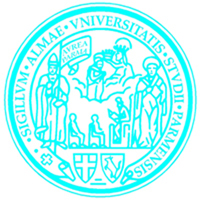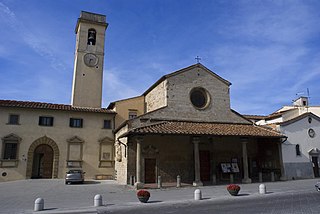Related Research Articles

The Renaissance is a period of history and a European cultural movement covering the 15th and 16th centuries. It marked the transition from the Middle Ages to modernity and was characterized by an effort to revive and surpass the ideas and achievements of classical antiquity. Associated with great social change in most fields and disciplines, including art, architecture, politics, literature, exploration and science, the Renaissance was first centered in the Republic of Florence, then spread to the rest of Italy and later throughout Europe. The term rinascita ("rebirth") first appeared in Lives of the Artists by Giorgio Vasari, while the corresponding French word renaissance was adopted into English as the term for this period during the 1830s.

Publius Vergilius Maro, usually called Virgil or Vergil in English, was an ancient Roman poet of the Augustan period. He composed three of the most famous poems in Latin literature: the Eclogues, the Georgics, and the epic Aeneid. A number of minor poems, collected in the Appendix Vergiliana, were attributed to him in ancient times, but modern scholars consider his authorship of these poems to be dubious.

Guarino Veronese or Guarino da Verona was an Italian classical scholar, humanist, and translator of ancient Greek texts during the Renaissance. In the republics of Florence and Venice he studied under Manuel Chrysoloras, renowned professor of Greek and ambassador of the Byzantine emperor Manuel II Palaiologos, the first scholar to hold such courses in medieval Italy.
This article contains information about the literary events and publications of 14th century.
This article is a list of the literary events and publications in the 15th century.
This article contains information about the literary events and publications of the 13th century.
This article contains information about the literary events and publications of 1630.
This article contains information about the literary events and publications of 1564.
This article contains information about the literary events and publications of 1547.
This article contains information about the literary events and publications of 1500.

The University of Parma is a public university in Parma, Emilia-Romagna, Italy. It is organised in nine departments. As of 2016 the University of Parma has about 26,000 students.

Charles Homer Haskins was an American medievalist at Harvard University. He was an advisor to U.S. President Woodrow Wilson. He is widely recognized as the first academic medieval historian in the United States, and the Haskins Medal was named in his honor.

Merano or Meran is a comune (municipality) in South Tyrol, Northern Italy. Generally best known for its spa resorts, it is located within a basin, surrounded by mountains standing up to 3,335 metres above sea level, at the entrance to the Passeier Valley and the Vinschgau.
Rishonim were the leading rabbis and poskim who lived approximately during the 11th to 15th centuries, in the era before the writing of the Shulchan Aruch and following the Geonim. Rabbinic scholars subsequent to the Shulchan Aruch are generally known as acharonim.

Sesto Fiorentino, known locally as just Sesto, is a commune in the Metropolitan City of Florence, Tuscany, central Italy.
Events from the 1540s in England.

The migration waves of Byzantine Greek scholars and émigrés in the period following the end of the Byzantine Empire in 1453 is considered by many scholars key to the revival of Greek studies that led to the development of the Renaissance humanism and science. These émigrés brought to Western Europe the relatively well-preserved remnants and accumulated knowledge of their own (Greek) civilization, which had mostly not survived the Early Middle Ages in the West. The Encyclopædia Britannica claims: "Many modern scholars also agree that the exodus of Greeks to Italy as a result of this event marked the end of the Middle Ages and the beginning of the Renaissance", although few scholars date the start of the Italian Renaissance this late.

Bologna is the capital and largest city of the Emilia-Romagna region in Northern Italy. It is the seventh most populous city in Italy, with about 400,000 inhabitants and 150 different nationalities. Its metropolitan area is home to more than 1,000,000 people. Bologna is most famous for being the home to the oldest university in continuous operation, the University of Bologna, established in AD 1088.
Nationality words link to articles with information on the nation's poetry or literature.
Nationality words link to articles with information on the nation's poetry or literature.
References
- ↑ Frucht, Richard C., ed. (2005). Eastern Europe: an introduction to the people, lands, and culture. ABC-CLIO. p. 62. ISBN 978-1-57607-800-6.